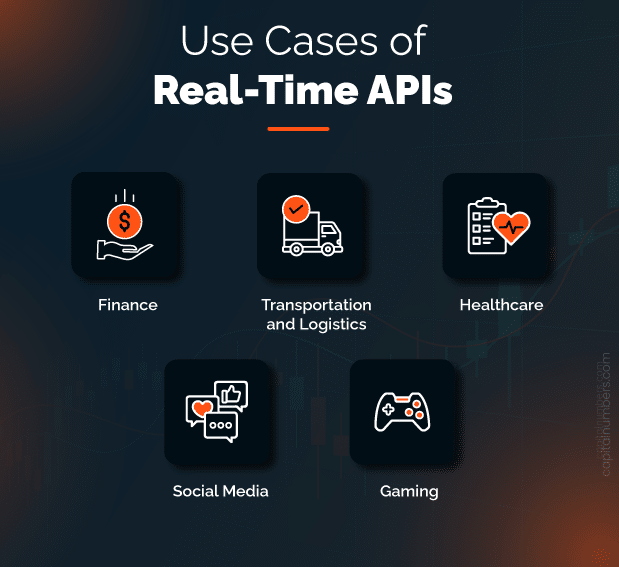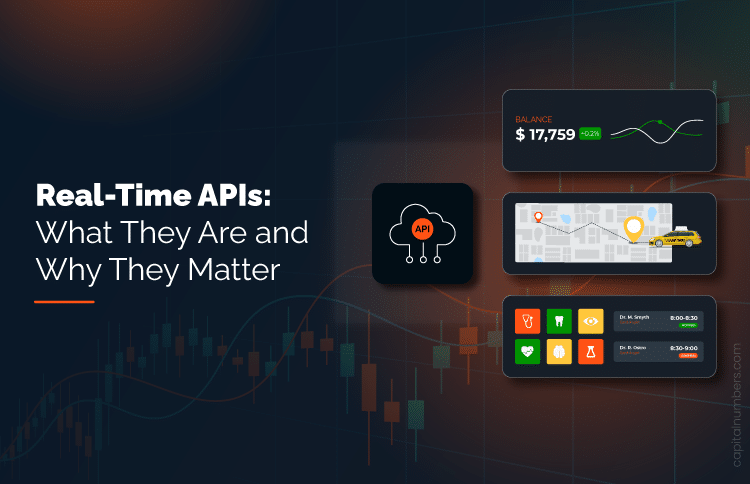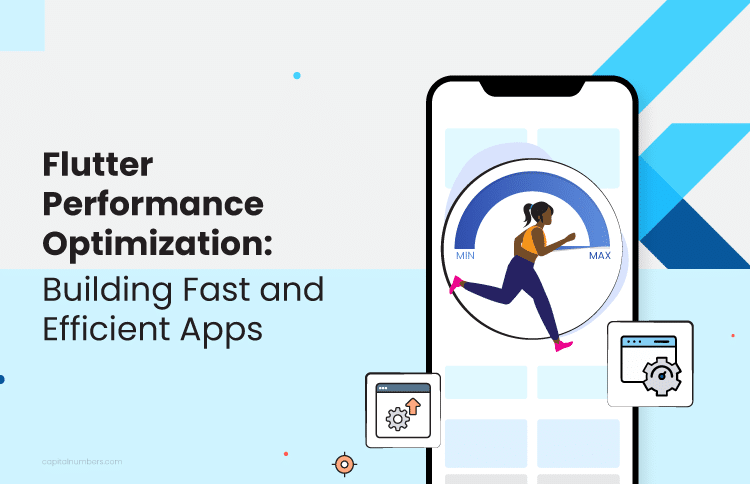Real-Time APIs: What They Are and Why They Matter
Table of Contents
Imagine you’re trading stocks and need instant price updates to make split-second decisions, or you’re using a ride-sharing app and want to track your driver’s location in real time. In these scenarios, having up-to-the-second information is crucial.
This is where real-time APIs come in. They allow applications to send and receive data immediately, ensuring users get the most current information without delays.
Real-time APIs are a crucial aspect of modern API development services. They ensure that applications remain responsive and provide the latest data to users instantaneously. In this blog, we’ll discuss what real-time APIs are, why they are essential in today’s tech landscape, and how they can enhance your applications with immediate data updates and improved user experiences.
Understanding Real-Time APIs
What is an API (Application Programming Interface)?
An API, or Application Programming Interface, is a set of rules that allows different software applications to communicate with each other. Think of it as a translator that helps two systems understand each other and share information.
What distinguishes a real-time API from other types of APIs?
A real-time API is a special kind of API designed to provide immediate data updates. Unlike traditional APIs, which might provide data on request, real-time APIs push data to clients instantly as it changes. This is crucial for applications that need up-to-the-second information, such as live sports updates, stock trading platforms, or messaging apps.
How Real-Time APIs Work
Overview of Real-Time Data Exchange: Real-time data exchange means continuously sending and receiving data between a client (like a web browser or app) and a server (where data is stored). This ongoing communication ensures that the client always has the most current data.
Push vs. Pull Mechanisms:
- Push Mechanism: The server sends (pushes) data to the client as soon as it’s available. This is like getting a text message instantly when it’s sent.
- Pull Mechanism: The client regularly checks (pulls) the server for new data. This is like refreshing your email inbox to see if new messages have arrived.
WebSockets, Server-Sent Events (SSE), and HTTP/2 Streaming:
- WebSockets: A communication protocol that allows for a persistent connection between the client and server. It’s like having an open phone line where both parties can talk and listen at the same time.
- Server-Sent Events (SSE): A technology where the server sends automatic updates to the client over a single, long-lived HTTP connection. It’s like subscribing to a newsletter where new updates are delivered to you automatically.
- HTTP/2 Streaming: A protocol that allows multiple streams of data to be sent over a single connection, improving efficiency and speed. It’s like having multiple lanes on a highway, allowing more cars (data) to travel simultaneously without slowing down.
Key Components of Real-Time APIs
Data Streaming
Data streaming involves a continuous flow of data between the server and the client. This is crucial for applications that require real-time updates, such as live sports scores or financial market data.
Examples of Streaming Protocols and Services:
- Kafka: A distributed streaming platform that handles high-throughput and low-latency data pipelines.
- Apache Pulsar: A cloud-native distributed messaging and streaming platform.
- Google Pub/Sub: A messaging service for ingesting event streams in real-time.
Event-Driven Architecture
Event-driven architecture (EDA) is a design pattern where the flow of the program is determined by events such as user actions, sensor outputs, or message arrivals. In this architecture, services react to events, making the system more responsive and scalable.
Real-Time Event Processing:
In real-time event processing, events are processed as soon as they are detected. This allows applications to react to changes immediately, providing up-to-date information and improving user experience. Examples include real-time notifications and automated trading systems.
Latency and Performance
Low latency is critical for real-time APIs because it ensures minimal delay in data transmission, which is essential for applications requiring instant updates.
Techniques for Reducing Latency in Real-Time APIs:
- Edge Computing: Processing data closer to the source to reduce the time it takes to travel.
- Load Balancing: Distributing network or application traffic across multiple servers to ensure no single server becomes a bottleneck.
- Efficient Protocols: Using protocols like WebSockets that maintain a persistent connection, reducing the overhead of establishing new connections.
- Caching: Storing frequently accessed data in memory to reduce access time.
Benefits of Real-Time APIs
Enhanced User Experience
Real-time APIs provide instant updates to users, making applications highly responsive. This is crucial for apps where timing is critical, such as messaging platforms or live score updates. Users get the latest information without needing to refresh or wait, which greatly improves their experience.
Case Study: Real-Time Collaboration Tools (e.g., Google Docs)
Google Docs uses real-time APIs to allow multiple users to edit documents simultaneously. Changes appear immediately for all users, making collaboration seamless and efficient. This responsiveness is a key feature that sets real-time collaboration tools apart from traditional software.
Improved Decision Making
Real-time APIs ensure that the data users interact with is always current. This is particularly important for applications like financial trading platforms, where having the latest information can mean the difference between profit and loss.
Case Study: Real-Time Analytics Dashboards
Real-time analytics dashboards aggregate and display data as it is received. For instance, business intelligence tools use real-time APIs to provide live data visualizations, allowing companies to make informed decisions quickly based on the latest data trends.
Operational Efficiency
Real-time APIs enable automation and continuous monitoring of systems, which can significantly enhance operational efficiency. By providing instant feedback and alerts, they help in promptly addressing issues and optimizing performance.
Case Study: IoT Devices and Real-Time Data Processing
IoT devices rely heavily on real-time APIs to send and receive data continuously. For example, smart home systems use real-time data to monitor and control various devices, like thermostats and security cameras, ensuring optimal operation and quick response to any changes or issues.
You May Also Read: How Does IoT Empower Disaster Management with Real-Time Data
Use Cases of Real-Time APIs

1. Finance
- Stock Market Trading Platforms: Real-time APIs are critical in stock trading platforms, where they provide up-to-the-second stock prices and trade execution. This immediacy allows traders to make informed decisions quickly, capitalize on market movements, and execute trades with minimal delay.
- Real-Time Currency Exchange Rates: Currency exchange platforms use real-time APIs to provide users with the latest exchange rates. This is essential for both consumers and businesses to make timely and accurate financial transactions, minimizing the risk of loss due to rate fluctuations.
2. Transportation and Logistics
- Ride-Sharing Apps (e.g., Uber, Lyft): Ride-sharing apps rely on real-time APIs to match drivers with passengers, track vehicle locations, and provide estimated arrival times. This real-time data enhances the user experience by providing accurate and timely information.
- Real-Time Tracking of Shipments: Logistics companies use real-time APIs to track the movement of shipments. Clients can see the exact location of their goods at any given moment, improving transparency and customer satisfaction.
3. Healthcare
- Remote Patient Monitoring: Healthcare providers use real-time APIs to monitor patients remotely. For example, wearable devices can send continuous health data (like heart rate and glucose levels) to healthcare professionals, enabling them to provide timely interventions.
- Real-Time Health Data Analytics: Real-time APIs facilitate the analysis of health data as it is collected. This allows for immediate insights and decisions, improving patient outcomes by identifying potential issues early.
4. Social Media
- Live Feeds and Notifications: Social media platforms use real-time APIs to update feeds and send notifications instantly. This keeps users engaged by ensuring they receive the latest posts, comments, and messages without delay.
- Real-Time Chat Applications: Real-time APIs are the backbone of chat applications, allowing users to send and receive messages instantaneously. This instant communication is crucial for both personal and professional interactions.
5. Gaming
- Multiplayer Online Games: Multiplayer games use real-time APIs to synchronize game states between players. This ensures that all players have the same game experience, which is essential for fair play and enjoyment.
- Real-Time Leaderboards and Updates: Gaming platforms often feature real-time leaderboards that update scores and rankings instantly. This keeps players motivated and engaged by providing immediate feedback on their performance.
Challenges and Considerations
1. Scalability
Handling Large Volumes of Real-Time Data: One of the biggest challenges with real-time APIs is managing the high volume of data that needs to be processed and delivered instantaneously. As the number of users and data points grows, the system must scale efficiently to handle the increased load.
Solutions:
- Load Balancing: Distributes the data and traffic load across multiple servers to prevent any single server from becoming overwhelmed. This ensures smooth and continuous operation even during peak usage times.
- Cloud Services: Leveraging cloud infrastructure allows for dynamic scaling based on demand. Cloud providers like AWS, Azure, and Google Cloud offer scalable resources that can be adjusted automatically to meet the needs of real-time data processing.
2. Security
Protecting Real-Time Data Transmission: API Security is crucial when dealing with real-time data, as sensitive information is often transmitted. Ensuring that this data remains secure from unauthorized access and breaches is a significant challenge.
Encryption and Authentication Mechanisms:
- Encryption: Encrypting data during transmission ensures that even if it is intercepted, it cannot be read without the decryption key. Using protocols like TLS (Transport Layer Security) helps protect data integrity and privacy.
- Authentication: Implementing strong authentication mechanisms, such as OAuth, ensures that only authorized users and applications can access the real-time APIs. This helps prevent unauthorized access and potential data breaches.
3. Reliability
Ensuring Consistent Data Delivery: For real-time APIs, maintaining consistent and reliable data delivery is crucial. Any disruption or delay can significantly impact the user experience and the functionality of the application.
Strategies:
- Failover Systems: Implementing failover systems ensures that if one server or component fails, another takes over immediately, minimizing downtime. This helps maintain continuous service availability.
- Redundancy: Building redundancy into the system involves duplicating critical components and pathways so that if one part fails, others can continue to function. This approach helps ensure that there is no single point of failure and enhances the overall reliability of the system.
You May Also Read: 12 Best Practices to Secure Your API in the AWS Cloud
Implementing Real-Time APIs
Choosing the Right Technology Stack
Popular Tools and Frameworks: When implementing real-time APIs, selecting the appropriate technology stack is crucial. Popular tools include:
- Node.js: Known for its non-blocking I/O operations, making it ideal for real-time applications.
- Socket.IO: A JavaScript library that enables real-time, bidirectional communication between web clients and servers.
Criteria for Selecting the Appropriate Technology:
- Scalability: Ensure the chosen technology can handle the expected load and can scale horizontally.
- Performance: Consider the response time and efficiency of the technology.
- Community and Support: Opt for technologies with robust community support and extensive documentation.
- Compatibility: Ensure compatibility with existing systems and ease of integration.
Best Practices
Designing Efficient Real-Time APIs:
- Optimize Data Flow: Minimize data payloads to reduce latency.
- Maintain Persistent Connections: Use protocols like WebSockets to keep connections open for continuous data exchange.
- Rate Limiting: Implement rate limiting to protect against abuse and ensure fair resource usage.
Testing and Monitoring Real-Time Performance
- Load Testing: Simulate high traffic to ensure the API can handle peak loads.
- Latency Monitoring: Continuously monitor response times to detect and address performance bottlenecks.
- Error Handling: Implement robust error handling to manage unexpected issues without disrupting service.
Example Implementation
Step-by-Step Guide to Building a Simple Real-Time API:
1. Setup Environment: Install Node.js and initialize a new project.
npm init -y
npm install express socket.io
2. Create Server: Set up an Express server with Socket.IO.
const express = require('express');
const http = require('http');
const socketIo = require('socket.io');
const app = express();
const server = http.createServer(app);
const io = socketIo(server);
io.on('connection', (socket) => {
console.log('New client connected');
socket.on('message', (data) => {
io.emit('message', data);
});
socket.on('disconnect', () => {
console.log('Client disconnected');
});
});
server.listen(4000, () => console.log('Listening on port 4000'));
3. Test the API: Use a client-side script to connect and communicate with the server.
<script src="/socket.io/socket.io.js"> </script>
<script>
const socket = io('http://localhost:4000');
socket.on('connect', () => {
console.log('Connected to server');
socket.emit('message', 'Hello Server!');
});
socket.on('message', (data) => {
console.log('Message from server:', data);
});
</script>
This example demonstrates how to set up a basic real-time API using Node.js and Socket.IO, showcasing key implementation steps and code snippets.
You May Also Read: API Development FAQs: Get Your Questions Answered and Start Building
Conclusion
We covered the fundamentals of real-time APIs, their key components, benefits, use cases, challenges, and implementation steps. Real-time APIs enhance user experience, improve decision-making, and boost operational efficiency. The landscape of real-time APIs is evolving with advancements in machine learning, edge computing, and improved security measures. These trends will further enhance real-time data processing and application performance.
Ready to implement real-time APIs in your projects? Contact us today for expert API development and integration services to elevate your applications with real-time capabilities.















